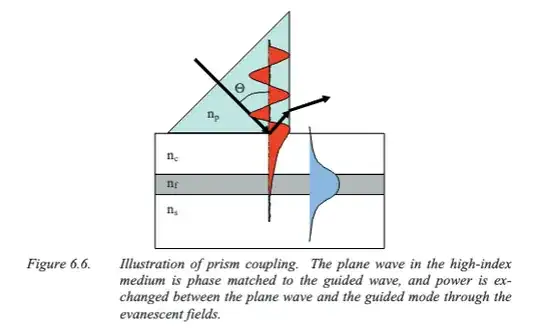What is the physical reason behind why a wave in the cladding of a waveguide cannot phase match to a guided wave?
I read that the most common solutions to coupling waves to a guided wave is to use prism coupling or a grating. But I have trouble understanding why we can't just couple directly to a guided wave with an incident wave that has the same k.
Here is a diagram of using prism coupling to couple to a guided wave (blue). (Source: Photonic Microsystems: Micro and Nanotechnology Applied to Optical Devices by O. Solgaard)
From below diagram, the text says that a wave in the cladding ($n_c$ layer) cannot couple into the guided wave since it cannot be phase-matched. So a prism or grating can be used instead. I don't understand this point.
